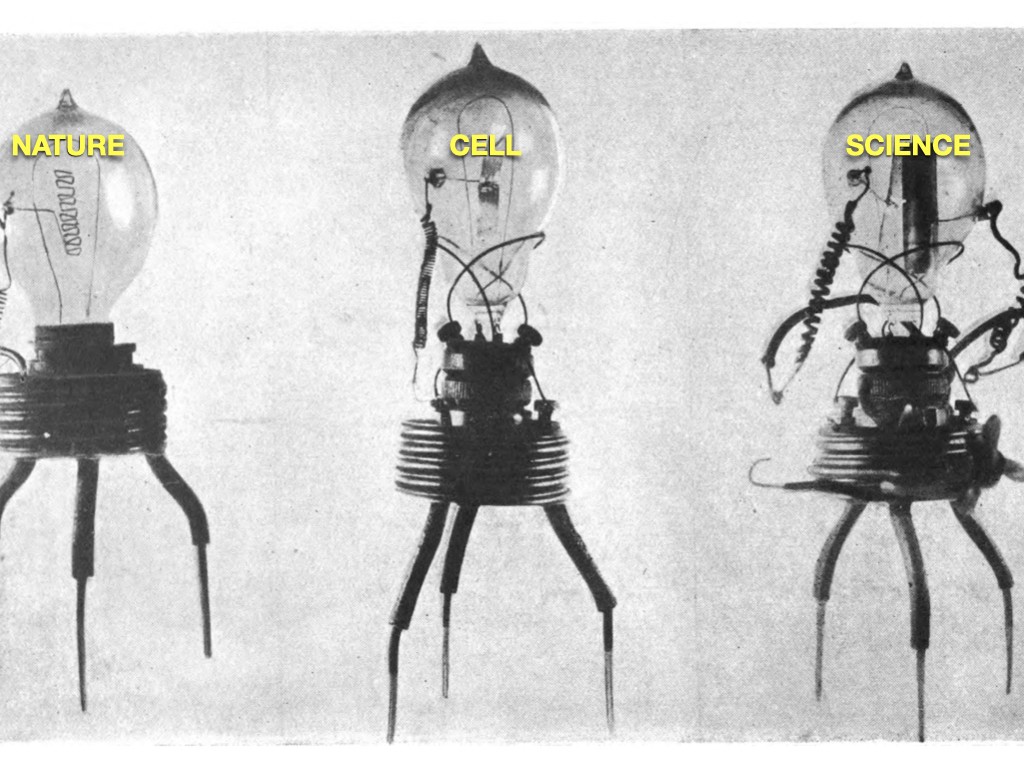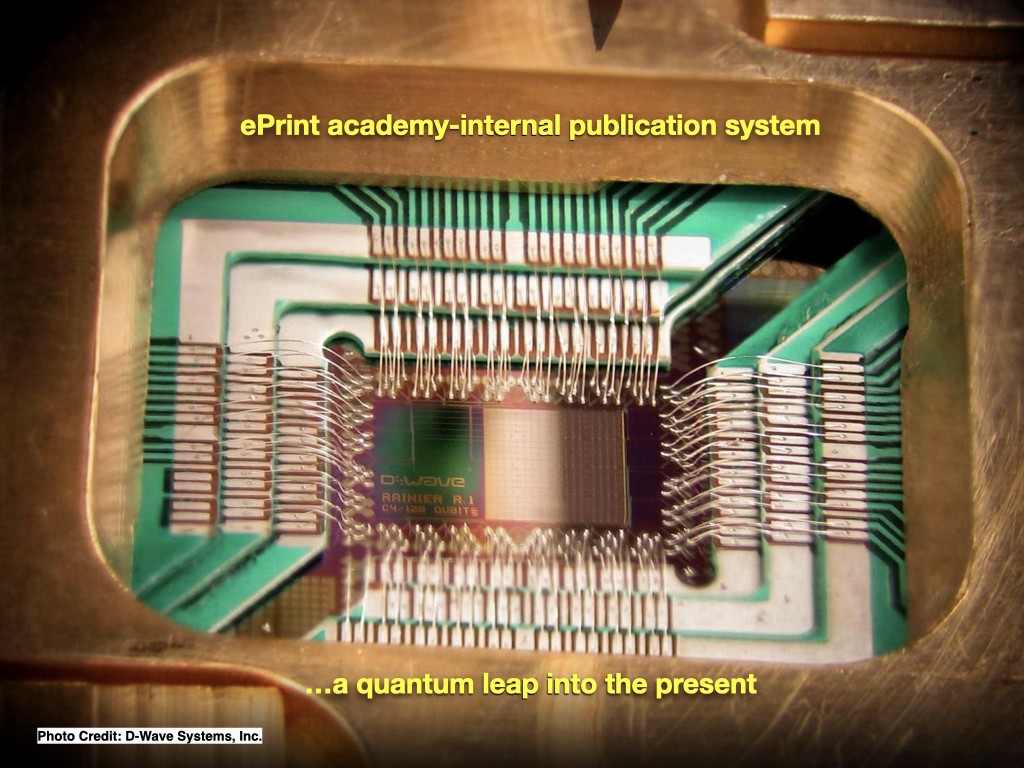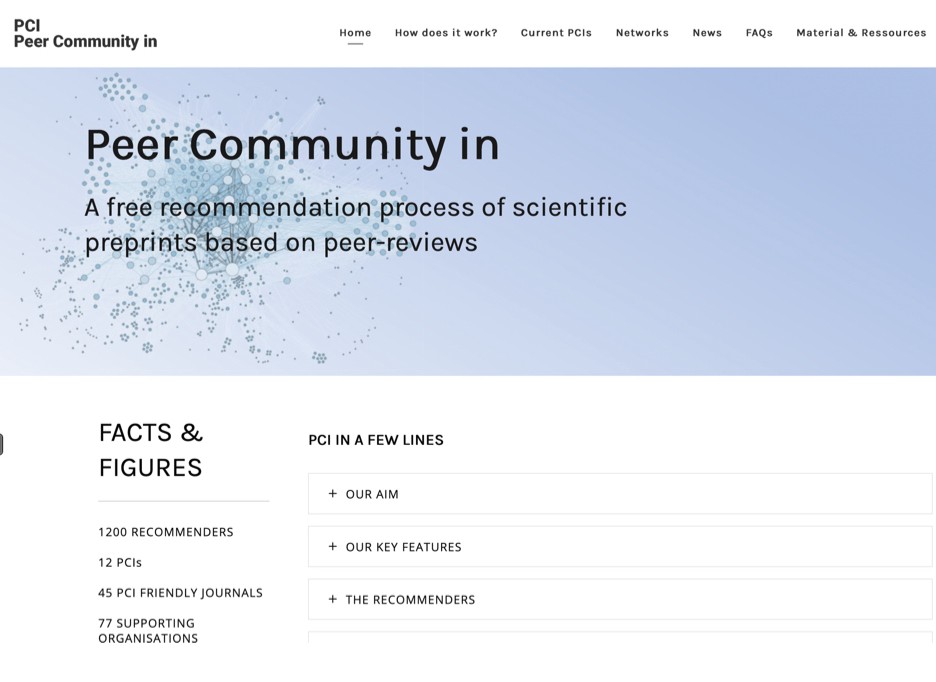
A beginning thought: Preprint services are more like libraries than journals. More interested in serving diverse stakeholders than in gate-keeping or ersatz-excellence. Happy to include work from grad students and emeriti, and from scientists anywhere on the planet. They are heralds of what needs to emerge in the aftertimes.
Academic journals are becoming the vacuum tubes of the Academy 2.0 enterprise; they are already described and defined more by their limitations than by their advantages. In their early decades, they served us well, until they didn’t. After the transition to an academy-internal publication economy, powered by ePrint services hosted across the planet, journals will not be missed. That individual academic libraries should need to continue to pony up for thousands of journal subscriptions for decades to come is now an idea only in the Xeroxed business models of for-profit publishers. Everyone else is looking for a way out; and the internet awaits.
Preprint services are a transitional step for open science. What we now call preprint services will soon evolve into ePrint services hosted by libraries and other long-term academy organizations, probably in consortia. These will connect to author-side writing and editing tool platforms, and to data and software repositories. In the approaching aftertimes, online ePrint services will become the primary destination for academy writing.
In the approaching aftertimes, online ePrint services will become the primary destination for academy writing.
The near-future, post-subscription academic information economy will optimize quality recognition and regulation through crowd-sourced, post-ePrint peer reviews. Thousands of learned societies and universities, and their millions of members and faculties, can pivot from the current, massive, corvée-labor scheme of unpaid and uncredited, pre-publication editing and reviews, to an academy-internal system of online review sites where each post-ePrint review is also a mini-publication, open to search and comment, and citation. Today, “overlay journals” call out important content on preprint servers without the need to re-publish this. Tomorrow, there will be many more opportunities to add value to preprint content.
Academy goods are anti-rivalrous public goods. They are expensive to create, they take intellect, skill, time and teamwork to achieve. But they are also enormously cheap to share across the internet, and they gain in value the more they are shared. Library subscription budgets can be redirected into training and support for eScholarship/ePrint platforms and an emergent range of open publication opportunities: a quantum leap into the present.

The current finite games of publication prestige theatre — rejection rates and impact factors, for example — damage the ability of the academy to claim truthfulness in its mission and its findings. Scientific truthfulness — the sincere intention of serving the truth in communication — gets eroded whenever the opportunities for publication require serving the marketplace’s requirements for breakthrough results and the artificial scarcity of available content. Just a quick reminder here…. we have a reproducibility problem that current academic journals will not help resolve. Also remember, Retraction Watch has now listed more than 25,000 peer-reviewed articles published in established journals that were later retracted.
Meanwhile, preprint servers are already hosting more than a thousand new submissions every day.
Meanwhile, preprint servers are already hosting more than a thousand new submissions every day. These articles are made available to readers across the planet in days or hours. A great number of these articles will not later find the luck needed to attract the generous attention of an editor, and the precise fit for a specific journal, and the good graces of anonymous reviewers. But these articles are bursting with scientific findings gleaned from an uncooperative universe through years of work. They deserve to be found and read today. To be critiqued and improved tomorrow.
Preprint services are new and nimble and ready to experiment and iterate to better serve the academy. For example, preprint services can host findings with null results, software articles, experiments that simply confirm or challenge other studies, and even idea gardens: great research idea “preposals” that are banked with a date stamp. Some preprints services host academic posters too. And all can pivot to new forms of scholarly content as these emerge: live code notebooks, nano-articles, videos — wherever science goes, and now it can arrive unhitched from a Nineteenth-Century publication model.
The free and open availability for new research results will accelerate the pace of scientific work, promote real-time collaborations on new studies, and generate a freely mineable corpus for meta-studies and machine-intelligent critical content review. Open APIs on preprint platforms are another weapon against sloppy science. If you’ve plagiarized someone’s public work, you better not put this up on a preprint server. If you’re relabeling existing work to pad your publications, you will get discovered. Preprint content is visibly self-tagged and flagged as “not-reviewed.” The willful misuse by others of information already tagged as not-reviewed is an edge case that is beyond simple remedy.

Should preprint services be made aware when a content item in their library is reviewed as bad science, or whatever? Yes, indeed. I personally answer the admin email for the EarthArXiv preprint service. Did you find content on EarthArXiv that is scientifically problematic? Does the article’s conclusion reveal that Earth is, indeed, flat? Then email EarthArXiv. We can and will respond to content issues.
Again, remember that a preprint service is more like a library than a journal. Nobody is asking you to subscribe. And article submission is free. Each article has a corresponding author. If you have a suggestion or a gripe about their method or algorithm, drop them an email. Tell them what you think.
Every village and town’s public library has books that describe how to perform activities that are potentially harmful. Have you seen the Boy Scout Handbook? This has practical information that could be used for torture and murder; I mean, beyond the usual scout troop mayhem (I’m speaking here as an Eagle scout). The misuse of information in the name of science is a larger societal problem and a challenge to the academy to reestablish its own claim for truthfulness. The recent need to tell children not to eat laundry detergent pods reflects a larger societal problem, not a cuisine issue.

Can preprint services use labels or badges so that readers can be informed of issues with its content? Certainly. And the quicker the better. And preprint servers can also coordinate to standardize these labels. Soon, I would venture, there will be badges, or something like badges, that learned societies and other academic organizations can use to highlight significant work and to marginalize substandard work directly on ePrint platforms.
Preprint service providers look to improve the value of their collections for public use. But as librarians, it is not their job to perform a gatekeeping role. Post-publication review is a community responsibility. The transition from today’s vestigial academic publication mode to the aftertimes ePrint solution will not be instant nor without pain for shareholders and academic press workers. But this transition still needs to move ahead as rapidly as possible.

The California Digital Library and the University of California library system are pioneers in this effort. Their eScholarship platforms are open access and available for use anywhere in the world. EarthArXiv is fortunate to be in this partnership. The new Janeway platform will gain in features and an ability to link out through CrossRef to a range of networked content.
Personally, I am looking forward to the time when EarthArXiv gets folded into some omnibus Earth science ePrint service capable of replacing hundreds of Earth science journals. This will save libraries around the planet tens of millions of dollars in subscriptions and article processing charges. Plenty of happy trees left in the forest as well.
